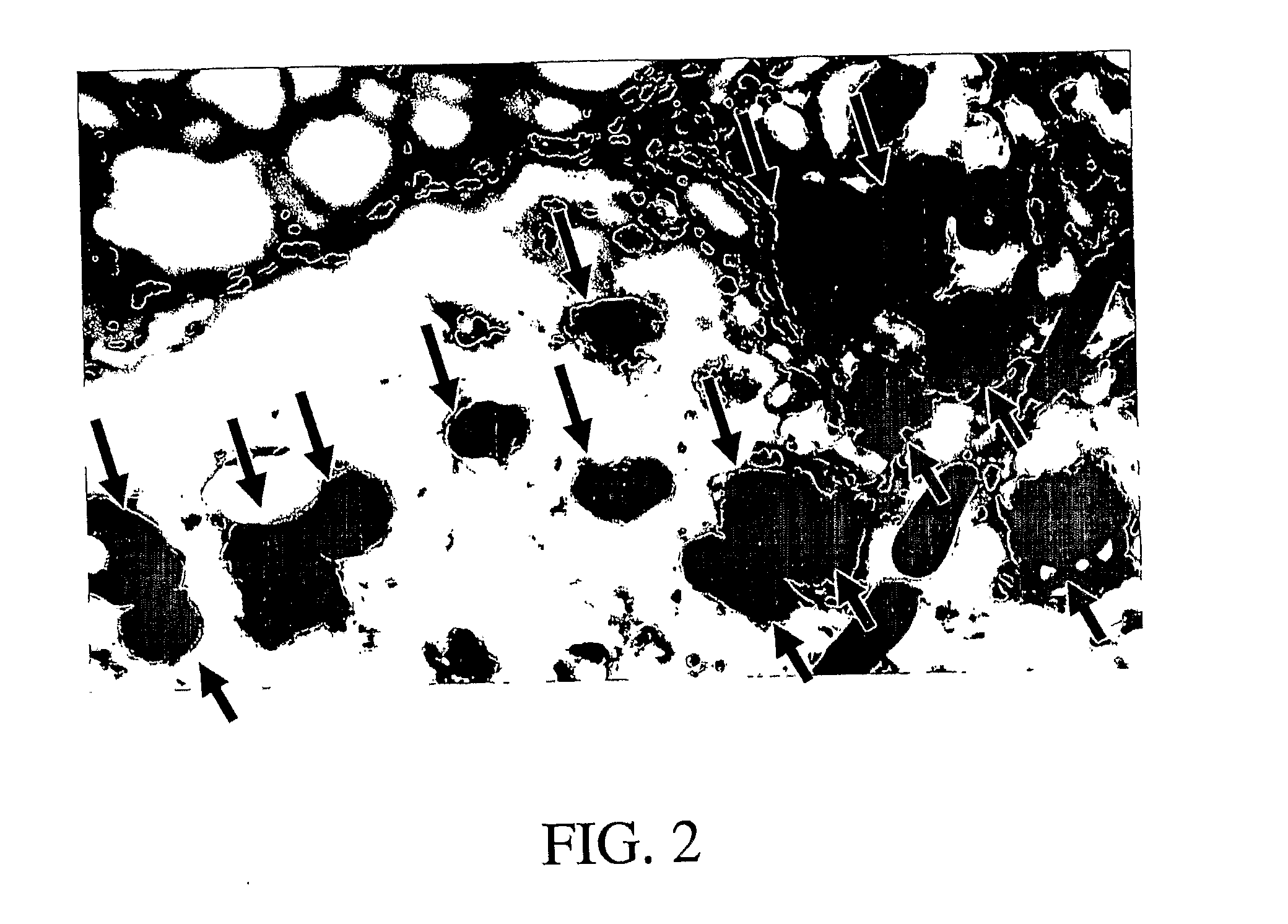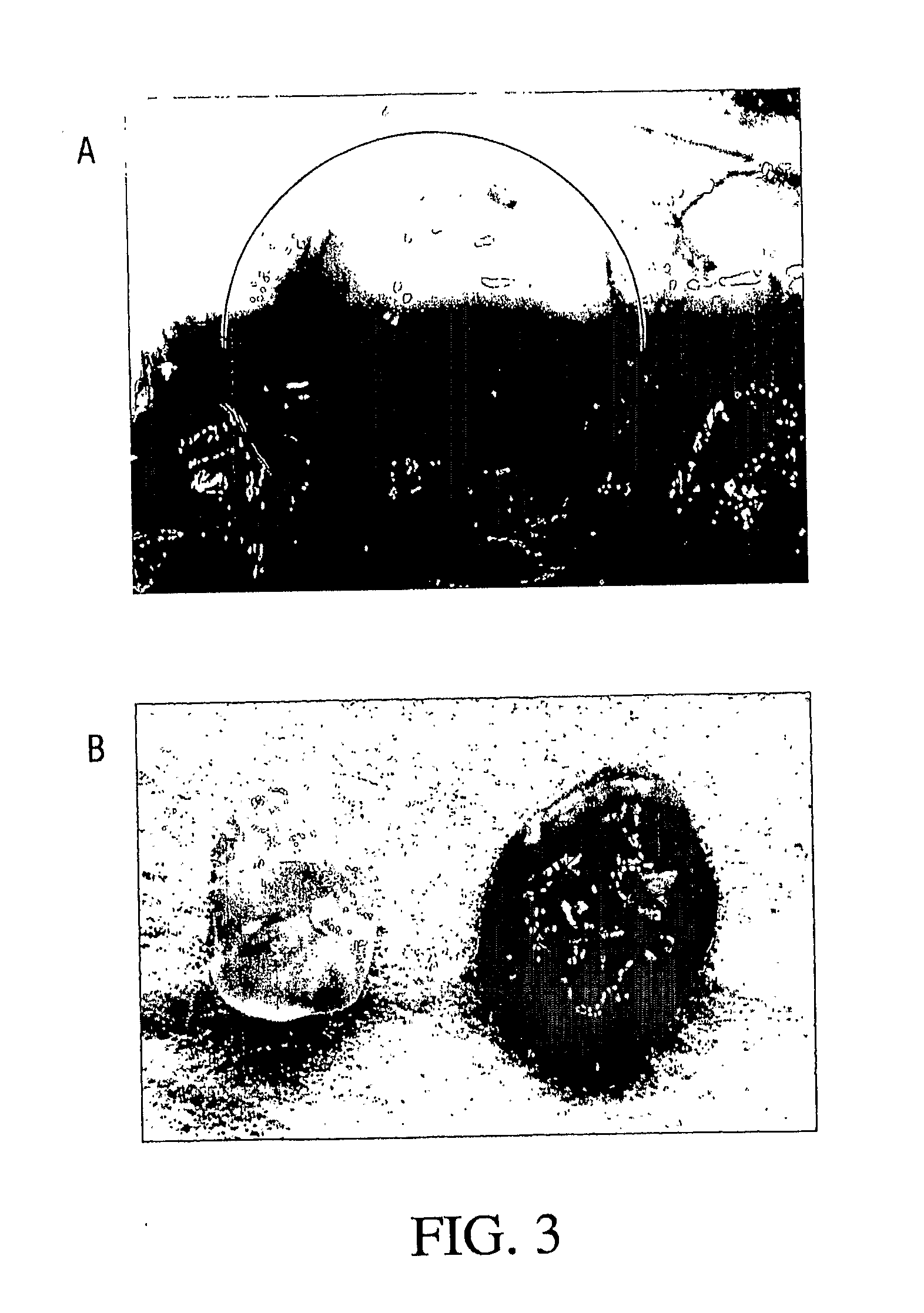Generation of adipose tissue and adipocytes
a technology of adipocytes and adipose tissue, applied in the field of medicine, can solve the problems of insufficient time to ascertain the stability of the tissue, insufficient time to generate mature adipocytes, and insufficient time to use cultured adult preadipocytes or stem cells
- Summary
- Abstract
- Description
- Claims
- Application Information
AI Technical Summary
Benefits of technology
Problems solved by technology
Method used
Image
Examples
examples
[0186]The present invention is further illustrated by the following examples, which should not be construed as limiting in any way.
example i
Generation of De Novo Adipose Tissue from Adipocyte-depleted Adipose Tissue-Derived Cells
[0187]Adipose tissue was dissected from the inguinal region of nine FVB GFPU mice (Jackson Laboratories) aged 1-5 months. Blunt dissection was used to break the tissue into small fragments approximately 1-3 mm in diameter. Tissue fragments were digested at 37° C. with 0.075% Collagenase (Sigma Chemical Company) in PBS for 55 minutes with rocking. Following centrifugation and washing to remove mature adipocytes and residual tissue aggregates and connective tissue, cell number and viability were determined by dye exclusion. Viability was 93% as determined by co-staining with acridine orange and ethidium bromide and visualizing under a fluorescence microscope. Cells were resuspended in either phosphate-buffered saline (PBS), Matrigel, or a collagen gel at 1.6 million cells / mL.
[0188]One milliliter of cells (or an equal volume of cell-free vehicle only) was injected into both the dorsal and ventral s...
example ii
Generation of De Novo Adipose Tissue from Cultured Adipose Tissue-Derived Cells
[0194]Adipose tissue was dissected from the inguinal region of nine FVB GFPU mice (Jackson Laboratories) aged 1-5 months. Blunt dissection was used to break the tissue into small fragments approximately 1-3 mm in diameter. Tissue fragments were digested with 0.075% Collagenase (Sigma Chemical Company) for 55 minutes. Following centrifugation and washing to remove mature adipocytes and residual tissue aggregates and connective tissue cell number and viability were determined by dye exclusion. Cells were plated in tissue culture medium (DMEM / F12 supplemented with 10% fetal calf serum, and antibiotic / antimycotic solution). Cultures were fed with bi-weekly demi-depopulation and were passaged by trypsinization at approximately 80% confluence. After two passages cells at 50-80% confluence were harvested and resuspended in PBS, collagen gel, or matrigel. A-ZIP mice, generated as described above, were injected in...
PUM
 Login to View More
Login to View More Abstract
Description
Claims
Application Information
 Login to View More
Login to View More - R&D
- Intellectual Property
- Life Sciences
- Materials
- Tech Scout
- Unparalleled Data Quality
- Higher Quality Content
- 60% Fewer Hallucinations
Browse by: Latest US Patents, China's latest patents, Technical Efficacy Thesaurus, Application Domain, Technology Topic, Popular Technical Reports.
© 2025 PatSnap. All rights reserved.Legal|Privacy policy|Modern Slavery Act Transparency Statement|Sitemap|About US| Contact US: help@patsnap.com



